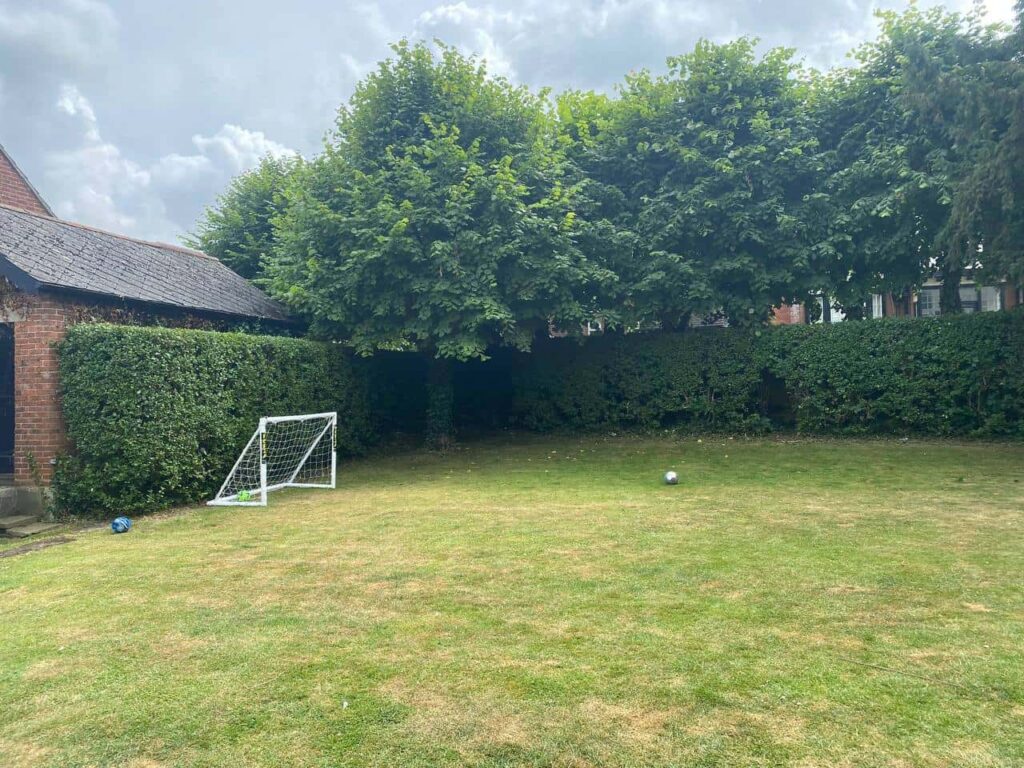Introduction
Pruning trees is an essential part of tree care — improving health, controlling growth, and preventing hazards. But when those trees are planted on a slope, things get a bit trickier. Sloped gardens are beautiful and often add character to a property, but they pose unique challenges when it comes to tree maintenance.
At Sudbury Tree Surgeons, we’ve worked on many uneven landscapes in Sudbury, Suffolk. From safety concerns to managing water run-off, pruning trees on slopes requires more planning, technique, and expertise than a standard flat-garden job.
The Structural Challenges of Sloped Gardens
Uneven Ground Means Unsafe Working Conditions
Operating pruning tools on a slope significantly increases the risk of slips, trips, and falls — not just for the homeowner but for the tree surgeon as well. This makes using ladders, climbing gear, or elevated platforms more complicated. We always carry out risk assessments and bring the right safety equipment for secure access.
Tree Growth May Be Irregular
Trees on a slope often grow at an angle as they reach for light, or their crowns may be uneven due to wind exposure and sun position. This asymmetry means pruning has to be more targeted. Taking too much weight from the wrong side of an already leaning tree could increase instability, so every cut must be considered carefully.
Environmental Factors That Affect Tree Health
Soil Erosion and Root Exposure
Sloped gardens are more prone to erosion. As rainwater washes down the slope, it can strip away soil from around tree roots. If not managed properly, this weakens the tree’s anchorage. Pruning can help reduce canopy weight to relieve pressure on compromised roots, but the approach needs to be balanced.
Water Drainage Impacts Growth
Water tends to flow away quickly on sloped ground, meaning trees may receive less moisture than expected. This stress can lead to slower growth or weak limbs. Pruning under these conditions should aim to preserve as much healthy structure as possible while reducing risks.
Why Professional Tree Surgery Matters on Slopes
Tools and Techniques Must Be Adapted
Tree surgeons often need to use specialist climbing techniques or even ropes and harnesses anchored to different points to navigate a sloped site safely. Equipment must be secured, and each cut should be planned to ensure both stability and tree health.
Precision Pruning Reduces Risk of Toppling
A poorly executed pruning job on a sloped tree can make it top-heavy or unbalanced. Professional tree surgeons know how to assess tree lean, canopy density, and wind load to avoid making the tree more vulnerable. This is especially important in areas of Sudbury, Suffolk where high winds and clay-heavy soil can increase risk.
Benefits of Pruning Sloped-Garden Trees Correctly
- Improved long-term stability and root health
- Safer surroundings for households, especially children or pets
- More controlled growth that complements the slope’s natural design
- Reduced likelihood of tree failure during storms
Conclusion
Pruning trees on sloped gardens is not just a standard task with a different backdrop. It requires expertise, thoughtful planning, and a tailored approach to account for soil conditions, tree structure, and access limitations. Attempting it without the right knowledge could not only damage the tree but also pose serious safety risks.
If you have trees growing on a slope in your garden and want them maintained safely and professionally, contact Sudbury Tree Surgeons. We serve Sudbury, Suffolk and surrounding areas, helping homeowners manage trees in even the most challenging landscapes.
Call us on: 01787 322 388
Click here to find out more about Sudbury Tree Surgeons
Click here to complete our contact form and see how we can help with your tree needs.

